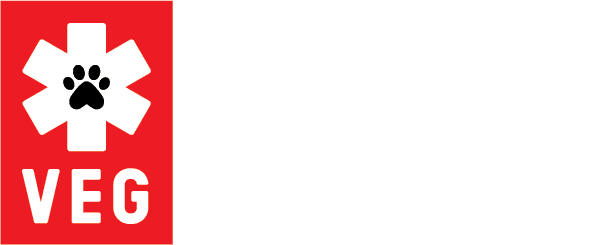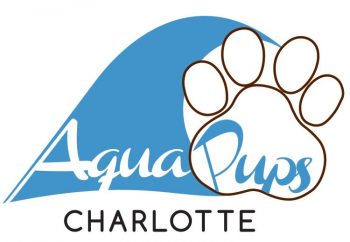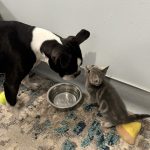Is your pet allergic to it’s food
The “Scoop” on pet food
Chances are as a responsible pet owner you sometimes wonder; what should I feed my pet? Should it be grain-free? Gluten-free? What about raw diets? It’s becoming a more and more difficult to navigate the labyrinth of information available from, national marketing campaigns or grassroots fads that have little or no basis in proper pet food nutrition.
When we discuss foods with pet parents we often find that some of them have jumped on the fad bandwagon—it’s easy to do. But the only way to provide our pets with the best nutrition, Is to thoroughly investigate the products. I hope this article will help you gain the information and expertise you need to choose an appropriate food for your pet.
Identify the real manufacturer
First of all, let’s identify the criteria for a high-quality pet food manufacturer: Does the manufacturer make the food in its own facility? Does it employ a board-certified veterinary nutritionist? Does it have an American Feed Control Officials (AAFCO) feeding trial statement? Does the company practice strict quality control measures and conduct and publish research on animal nutrition? Does the pet food bag read “manufactured by” as opposed to “distributed by” or “manufactured for”? Many foods are co-packed, or made by several different manufacturers then labeled by the end-of-the-line company that sells it.
Don’t trust what you read
Another problem for pet parents is are the ingredients on the label actually present in the food. A recent article reported that 20 of the 52 foods that were PCR-tested for ingredients showed a discrepancy between labeled ingredients and what was in the actual diet.1 this study found the most common ingredient was chicken and that the 20 mislabeled foods either had additional proteins or none of the advertised proteins. Pork was the most common undeclared protein, and two foods claiming to contain beef had none at all. This can be a problem when clients are trying to avoid a potential food allergen for their pet
Another study found that four over-the-counter (OTC) venison diets also contained beef, corn and soy, which were not listed on the label.2 the four foods found to have additional ingredients not listed on the label were compared with Royal Canin’s venison and potato, which was found to contain only venison and potato
When trying to rule out food allergies, we feel that prescription limited-ingredient diets or supervised home-cooked diets are a better choice than OTC diets claiming to be limited-ingredient, as some of these foods don’t live up to their promises. Another option for food-allergic pets is custom-blend diets.
Familiarize yourself with fad diets
“Grain-free” is the new buzzword for pet parents. The problem is that grain-free does not mean hypoallergenic, and there is no set AAFCO definition of “grain-free.” So grain-free can mean different things to different food manufacturers. What you might not realize is that dogs are of the carnivore species but are omnivores in their eating habits, so complex carbohydrates are actually necessary for normal stool formation. Obesity often thought to be a problem with high-carbohydrate foods is actually more of a concern with high-fat diets.
Many pet parents are also gravitating toward raw food diets because “that’s what animals eat in the wild” and “it’s natural.” Of the 36 regions of genomes that differ between wolves and dogs, 10 play a role in digestion and metabolism, indicating legitimate nutritional differences between the two. Wild animals have a short lifespan, and these raw diets may not provide proper and complete nutrition for the long life our domestic pets enjoy.
Most raw diets are labeled as supplements or for intermittent feeding only—not for long-term nutrition. A recent article reviewed the scientific evidence for and against raw diets and reported that 60 percent of recipes used in homemade raw diets were found to have nutritional imbalances.3
“Enzymes” are another touted benefit of raw diets, yet most dogs and cats do not require exogenous enzymes for digestion. Blood work abnormalities for raw diet eaters include changes in white blood cells, thyroid issues and kidney problems. 3 necessitating periodic physical examination, urinalysis, complete blood count and serum chemistry profile evaluation.
Conclusion
It’s important to understand misleading marketing and to gather the best possible information about your pets’ health. At Independence Veterinary Clinic we recommend the larger pet food manufacturers, including Hill’s, Iams, Royal Canin and Nestlé Purina. They generally manufacture in house, employ board-certified veterinary nutritionists, publish nutritional research, and adhere to strict quality-control measures. They actually feed their food via AAFCO feeding trials (not all companies do this) and can provide a complete nutritional analysis of their products.
- Okuma TA, Hellburg RS. Identification of meat species in pet foods using a real-time polymerase chain reaction (PCR) assay.Food Control2015;50:9-17.
- Raditic DM, Remillard RL, Tater KC. ELISA testing for common food antigens in four dry dog foods used in dietary elimination trials.J Anim Physiol Anim Nutr2011;95(1):90-97
- Freeman LM, Chandler ML, Hamper BA, et al. Current knowledge about the risks and benefits of raw meat-based diets for dogs and cats.J Am Vet Med Assoc2013;243(11):1549-1558.
Bandon's Story
Bandon is a sweet lab that came to see us at IVC in 2011 when she about 1 1/2 yrs old. She was having issues with vomiting and diarrhea. At first we suspected her symptoms were related to stress or from eating things she shouldn’t be (like most labs do!). But her diarrhea kept coming back so we realized there was likely another reason. We checked her stool for intestinal parasites (which was negative). Then had her family stop all other treats and only feed her regular diet to try to eliminate other causes of the diarrhea, however Bandon continued to have diarrhea. Our next step was to change her diet to a prescription diet that was lower in fat and more easily digestible. Despite these changes she continued to have diarrhea. Bandon also presented to us a couple of times for skin allergies. With the knowledge of her having digestive and skin issues we started to suspect she might have a food allergy so we decided to have her try a hypoallergenic diet. We started her on a prescription diet called Royal Canin Hydrolyzed Protein Diet (HP). Hydrolysis is a process of breaking down food particles into such a small molecule the immune system can no longer recognize them as an allergen. Another option for hypoallergenic diets is choosing a novel protein. A novel protein is a protein that the pet has never been exposed to before. The main types of novel proteins are duck, rabbit and venison (although there are others). When a pet is fed either of these kinds of hypoallergenic diets they must only eat this diet (no other treats) for 10-12 weeks to see if it is beneficial. Luckily for Bandon it was the answer! She no longer has diarrhea and we also have not seen her for allergies since changing to the hydrolyzed diet!










